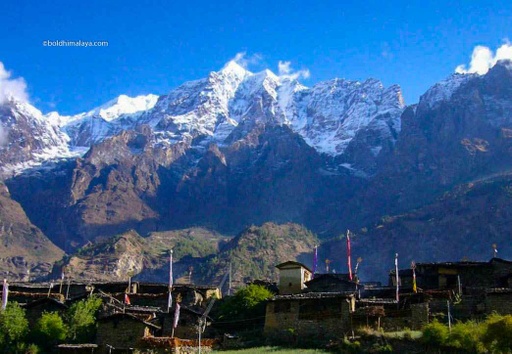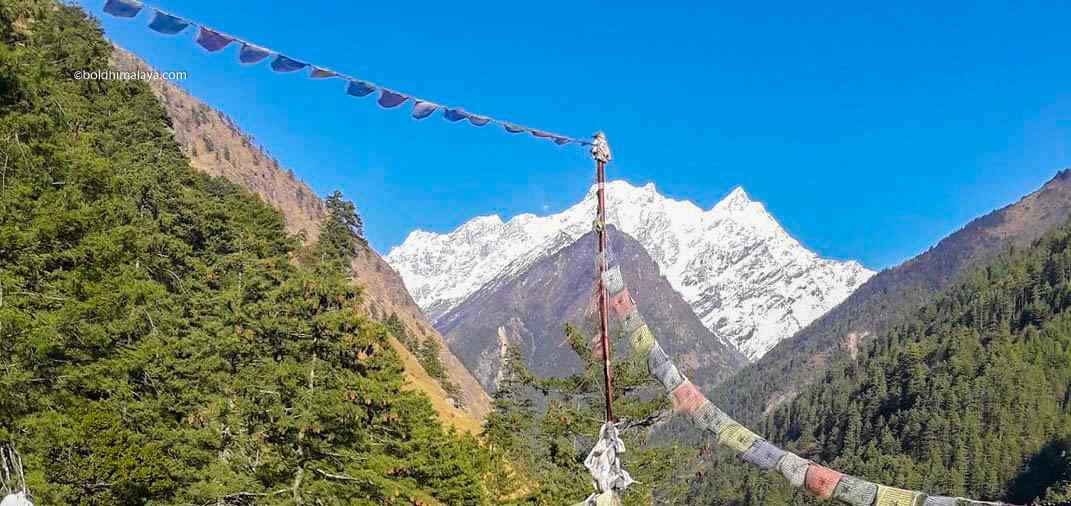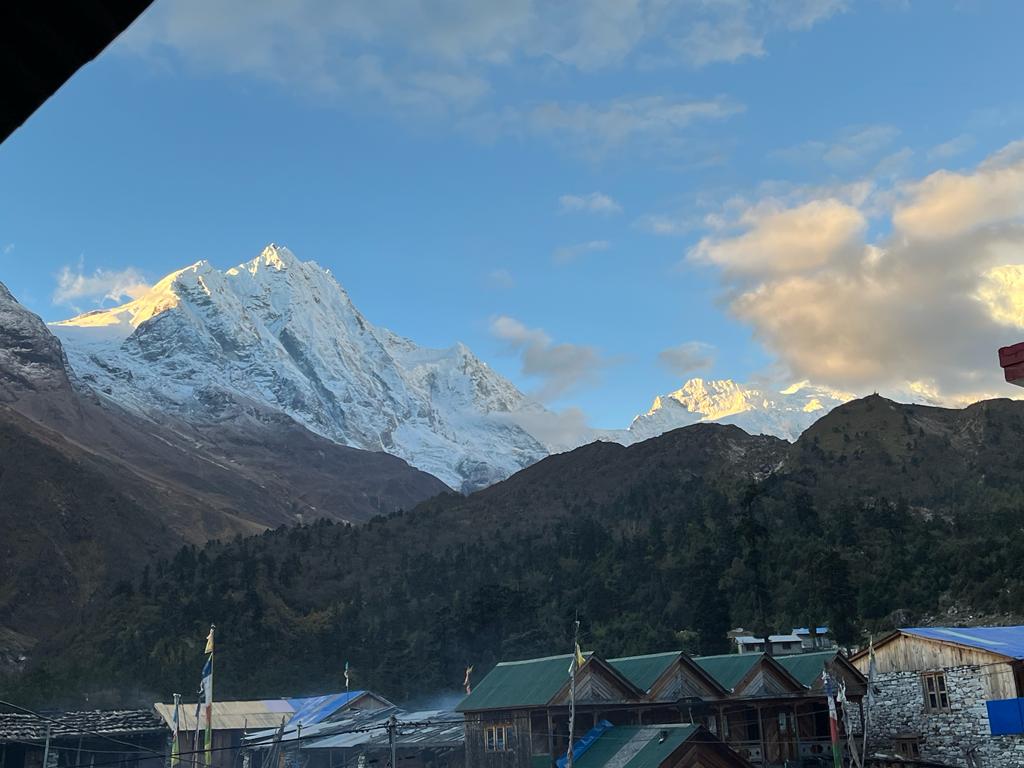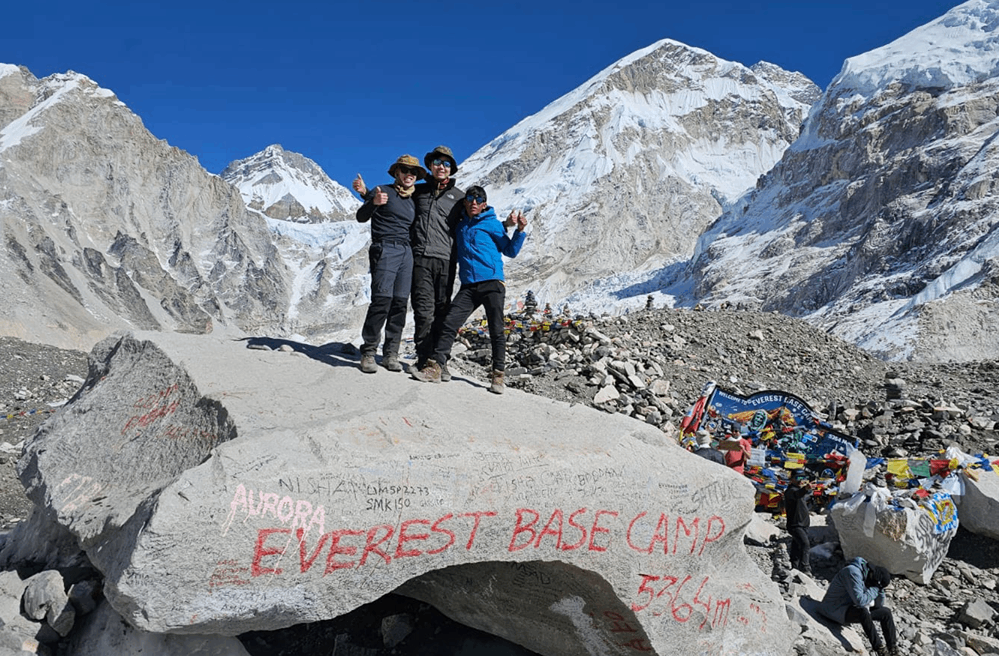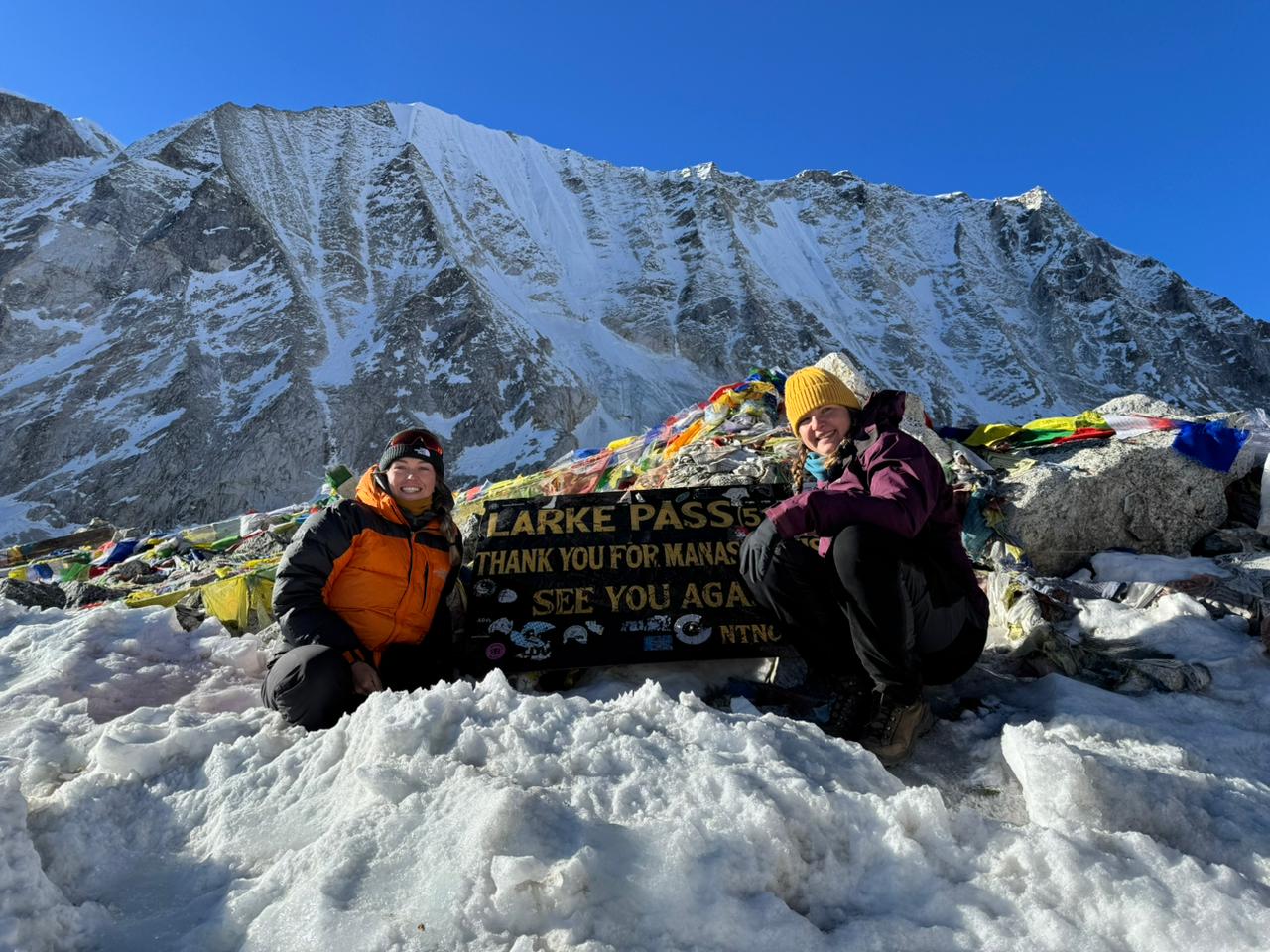Tsum Valley with Manaslu Circuit Trek | Larkey La Pass Trekking
Itinerary
Your Journey, Step by Step
Inclusions
What’s Covered in Your Adventure
- All ground transportation (including trekking starting/ending point, airport pick up/drop) by private tourist vehicles as per itinerary.
- Three-star category hotel in the city(Kathmandu) in twin sharing bed with breakfast basis & standard trekking lodge in Tsum Valley with Manaslu Circuit Trek route.
- Kathmandu sightseeing with private vehicles & experienced city tour guides.
- Full meals during trekking as mentioned in the itinerary (Breakfast, Lunch, Dinner with tea or coffee )
- First-aid medicine items.
- Manaslu Conservation Area Trekking permit, Restricted Area Permit & TIMS card (Trekkers Information Management System).
- Experienced, licensed trekking guides up to five trekkers in the group including their salary, accommodation, meals, and insurance.
- One assistance guide if trekkers are more than five in the group including their salary, accommodation, meals, transportation, and insurance.
- One porter to carry your luggage (for two guests one porter to carry baggage) including their salary, accommodation, meals, transportation, and insurance.
- Some necessary types of equipment sleeping bag & Down jacket (if you need one, return after the trek)
- One special cultural show and farewell dinner program.
- Duffle Bag to use in trekking, T-shirt, and Trip certificate (after trip completion).
- Our government/Local taxes and official expenses
- Extra Lunch & Dinner in Kathmandu.
- Dessert & any types of drinks during the trip.
- Kathmandu city tour entrance fee.
- Your international air ticket & travel insurance.
- Tips for the trekking crew members
Good to Know
Your Journey, Step by Step
Tsum Valley And Manaslu Trek Difficulty level
This journey offers a mix of challenging experiences as you explore the landscapes of Nepal. Over the course of 23 days hikers will traverse rough terrain passing through lush valleys and scaling peaks that reach, over 5,000 meters in height. While this trek provides an opportunity to immerse yourself in natures beauty and local culture it does require a level of fitness, stamina and mental strength. Be prepared to navigate inclines, paths, river crossings and varying weather conditions that can include cold temperatures and occasional snowfall depending on the time of year. Ensuring acclimatization staying hydrated and following safety guidelines are essential, for managing the challenges that come with altitudes.
Click the highlighted link for Proper Acclimatization Tips and Suggestions
Preparation for Manaslu Tsum Valley Trek
Before trekking on Tsum valley with Manaslu Circuit, you need to prepare fully. you will require a special permit from MCAP (Manaslu Conservation Area Project) and travel insurance. You need to be fully prepared with all the essential documents including physically and mentally too. As trekking is in higher altitude, best physical and mental fitness is required to succeed the trek. To improve physical fitness you can do swimming, running, short hiking or join gym classes and to improve mental fitness you can join gym classes and avoid negative talks.
Make sure to read Tips and Advice for Perfect Trekking in Nepal
Necessary documents
Here’s a list of essential documents:
Passport;
Make sure your passport is valid, for six months beyond your planned stay in Nepal.
Nepali Visa;
For travelers visiting Nepal you’ll need a tourist visa. You can get this upon arrival at Kathmandus Tribhuvan International Airport or at the border crossings. Another option is to apply for the visa of time through an embassy or consulate in your own country.
TIMS Card (Trekkers Information Management System);
When trekking in Nepal you’ll need a TIMS card, which helps authorities ensure trekkers safety by keeping track of their movements. You can get a TIMS card from the Nepal Tourism Board or an authorized trekking agency, in Kathmandu or Pokhara.
Restricted Area Permit:
To trek in the Manaslu Conservation Area and Tsum Valley hikers need to get a Restricted Area Permit either from the Nepal Tourism Board or the Immigration Office, in Kathmandu. This permit is necessary, from Jagat all the way until you reach Sama Gaun.
Manaslu Conservation Area Permit(MCAP) :
You will need this permit to enter Manaslu Conversation Area, Philim.
Annapurna Conservation Area Permit(ACAP) :
You will need it as you enter Dharapani.
Emergency Contact Information:
Make sure to have a list of emergency contacts, with you such as the details for your embassy or consulate in Nepal, local emergency services and the contact information, for your travel agency.
Visa Process to Enter Nepal
Citizens from any foreign country except India must requires a visa to enter Nepal. You need to fulfill the following requirements to get the visa of Nepal.
· Your original passport valid for at least next two months and two blank visa pages.
· Photocopies of the personal information page of your passport.
· At least one recent passport size picture of yourself.
· The completed and signed Nepal Tourist Visa Application form.
· Valid return flight or travel ticket.
· Proof of sufficient financial means.
· Proof of having paid the Nepal visa fee.
Health and Safety
The majority of trekking areas are situated at higher altitude therefore every trekkers must be concerned with their health and safety. Regarding your safety make sure you have a travel insurance and always keep on updated with weather. Carry paracetamol, medications, and first aid kit along with water purification tablets and hand sanitizer. Be sure to have enough acclimatization day as you are trekking on higher altitude.
Insurance
As per government rule, it is mandatory to have travel insurance for trekking in Nepal. Insurance must cover the highest altitude of respective trekking site as well as medicinal and evacuation facilities. Sometimes, sudden incident might happen therefore it is better to make travel insurance before trekking on higher altitude of Nepal.
Facilities on Manaslu Tsum Valley Trek
Drinking Water
Trekkers will have to drink 2 to 3 litres of water daily in order to keep themselves hydrated. Water is available on tap or streams but what concerns most; Is the water safe to drink? The water available on tap or streams are not considered as safe to drink. It is recommended to drink boiled or purified water. You can ask at tea houses or lodges for boiled water by paying some extra charges.You can also carry water purification tablets along with you to purify the water.
Hot shower and Laundry
Almost all of the tea houses provides hot water facilities for shower and laundry. In absence of those facilities tea houses will provide a bucket of hot water for shower and doing laundry. Remember you have to pay yourself for hot water.
Electricity and Internet facilities
Good access of electricity and internet are available through entire trekking trail.
At lower altitude, there is good access of electricity and charging phone or devices is no problem at all. But in higher altitude you might get problem while charging your devices even the tea houses or lodges have the access of electricity. Electricity is generated through solar power or hydro electricity at upper part so that electricity of low voltage are available. You have to ask with receptionist for charging your devices by paying some extra charges.
Internet access is good and has high speed in lower altitude. Since there is enough availability of internet at lower altitude you may noy have to pay charges. But in higher altitude you will have to pay some extra charges to get access of internet through wifi. Wifi may be little slow due to over-connection.
Guide and Porters for Manaslu Tsum Valley Trek
Hiring a porter and guide is another safety and comfort ideas. Guide organizes food, accommodation and gives you day to day information about the trek as well as he will apply and take the permit from MCAP as well to trek on Tum valley with Manaslu Circuit. Porter will carry your luggage 10 to 15 kg and walk with you during your trek. We provide you license holder and 10 year experienced porter and guide.
Responsible Tourism
We strongly believe in responsible tourism and our policies are guided by the principles for economic responsibility, Social responsibility and Environmental responsibility. We encourage our customers to be environment friendly to ensure the preservation of our pristine environment. We wish to preserve our local culture, customs and biodiversity, so we are continuously developing new potential areas for sustainable cultural and eco-friendly trips.
Packing list for Tsum Valley with Manaslu Circuit trek
- Trekking or hiking boots with good ankle supporter
- Duffle bag
- Good sleeping bag and sleeping bag liner
- Base layer of light, wicking material
- Mid layer short or light fleece
- Water proof jacket and trousers
- Trekking socks or wool socks
- Three quarter length or full length trekking trousers
- The thermal inner base layer
- Warm gloves and hats
- Good quality sunglasses
- Sun block or lip salve
- Sunhat, and woolen cap for the night
- Trekking sticks/poles
- Drinking bottles
- Water purification tablets
- Small first aid kit e.g. plasters, paracetamol, antiseptic wipes etc
- Flash light with spare batteries
- Handsanitizer, face/body wipes, bio degradable bar soap, washing liquid and portable chargers.
- Toiletries (toothbrush, toothpaste, deodrant, floss)
How to book the Manaslu Tsum Valley Trek?
Feel free to contact our team of travel professionals through our website, email, or phone. We’ll assist you every step of the way address any inquiries you might have and assist in selecting the itinerary that matches your preferences and timetable.
Other popular trips
Trekkers have the flexibility to extend their journeys beyond this Trek based on their physical fitness, time availability, and interests. You can choose various hiking tracks in Nepal, from easy to strenuous hikes. The scenic hiking trail is rich with terraced rice fields, steep hills, open pastures, and breathtaking suspension bridges with fluttering prayer flags. You may enjoy the easy treks while surrounded by a gorgeous environment.
FAQs
Your Questions, Answered
How high is Larkya La Pass?
Larkya La pass is one of the longest passes of the Himalaya in Manaslu region, situated at an altitude of 5,106 meters (16,752) above from sea level.
How to prevent altitude sickness?
The best way to prevent getting altitude sickness is to travel to altitudes above 2,500 meters slowly.
You can also:
- Avoid trekking directly on high altitude
- Avoid climbing more than 300 to 500 meters a day after 2,500 meters.
- Have a rest day every 600 to 900 meters you go up.
- Make sure you’re drinking enough water
- Eat a light but high-calorie diet.
How many days does it take to reach Larkya La Pass?
It takes around 12 days to reach Larkya La Pass including days at Kathmandu and acclimatization day. Larkya La Pass is the highest point of Manaslu Circuit trek at an altitude of 5,106 meters above from sea level.
What are the popular trips in Manaslu region?
The best trips in Manaslu region are Manaslu Base Camp, Serang gompa, Kalmachum Lake, Hinang Gumba, Birendra Lake, Manaslu Circuit, Annapurna Circuit, Tsum Valley and Rupina La Pass trek.
Can I choose hotel in Kathmandu?
Company will provide you 3* category hotel in Kathmandu. If you didn’t like the hotel that company had chosen, then you can choose the hotel yourself in Kathmandu. But the payment should be done by yourself.
How many days of acclimatization are enough for Manaslu Circuit with Tsum valley trek?
Two days of acclimatization at Samagaun and Samdoo are enough for the Manaslu Circuit trek. Even the Manaslu Circuit trek takes place at a high altitude but the trekking route is not so long and can be finished within 13 days.
Can I continue the trek after rest if I got sick?
You can continue going up with care once you feel you have fully recovered. If you do not feel any better after 24 hours, go down by at least 500 meters. Do not attempt to climb again until your symptoms have completely disappeared.
How much down payments should I pay while booking a trip?
To ensure your booking trip the 20% down payments is required to make advance as per company policy. As Nepal most liked tourist destinations and always overbooked we encourage you to make advance payment on time to secure your reservations.
How much should I give tips to trekking crews?
It is a better rule to thumb when trekking is to tip the equivalent of $5 per day for guides and $2 to $4 per day for porters. With guide and porters your trips will be more comfortable and memorable. You can give $ 5 per day for cook who will give you delicious food around the trek.
Why trek with Bold Himalaya?
Trekking with any agencies will give you more confidence and motivates you as well as you will be well known about the cultures and traditions of the society. Our Bold Himalaya is one of the renowned trekking agencies of Nepal. Some reasons why you trek with Bold Himalaya are:
- Trek with professional guide during your trip.
- Get valuable information and knowledge of trekking site.
- Easy to get permits for rural and Restricted Area trekking.
- Easily accessible of trekking materials and you won’t have to be worry.
- No compromise on your safety and security.
Is there anyone coming to pickup me?
One of the representatives from Bold Himalaya will come to pick you up at airport on your arrival. He/She will pick you and transfer you at 3 star category hotel referred by our Company.
How difficult is Tsum valley with Manaslu Crcuit trek?
The high altitude trek requires uphill and downhill climb along the steep and narrow paths. The trail passes through remote landscapes, high passes and snow capped mountains to the highest altitude of more than 4500 meters. Therefore, the trek is considered as a moderately challenging trek.
How many days does it take to complete Tsum valley with Manaslu circuit trek?
The trek requires 22 days to complete including the days at Kathmandu and acclimatization day during the trekking.
What are the benefits of Tsum valley with Manaslu Circuit trek?
- Explore the less explored and hidden valleys of the Manaslu region.
- Observe the antique monasteries, chortens and gompas in this region.
- Walk to tibetan border on the northern side of Manaslu region.
- Witness wide angle display of Mt. Manaslu, Hiunchuli, Ganesh Himal and Larkye La Pass.
- Navigate the novel trek routes to typical Tsum valley.
How much does it cost for Tsum valley with Manaslu circuit ?
While trekking on Tsum valley with Manaslu Circuit trek, you have to pay for special permit too and it is mandatory to pay for food, accommodation, snacks, transportation, guide and porter as well. to sum up, Manaslu Cirucit with Tsum valley is 22 day trek and will cost you around US$ 1300 to US$1400.
View OurSimilar Packages
Discover our top tours, loved by thousands of travelers annually. Choose the adventure that inspires you and embark on a journey tailored to your desires.
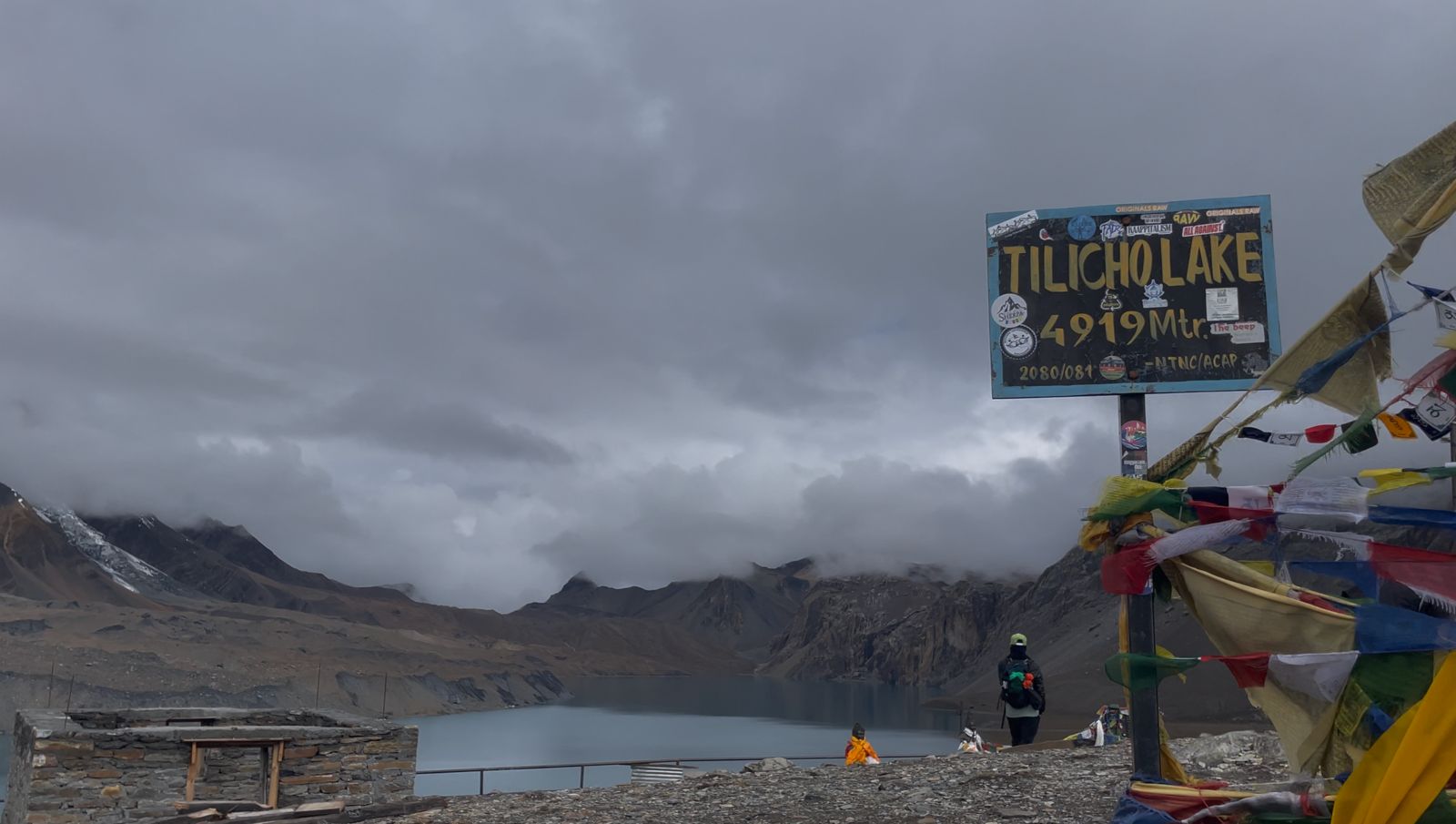
Save 22%
Annapurna Circuit Trek with Tilicho Lake
Imagine you walk up to a golden light that shines on...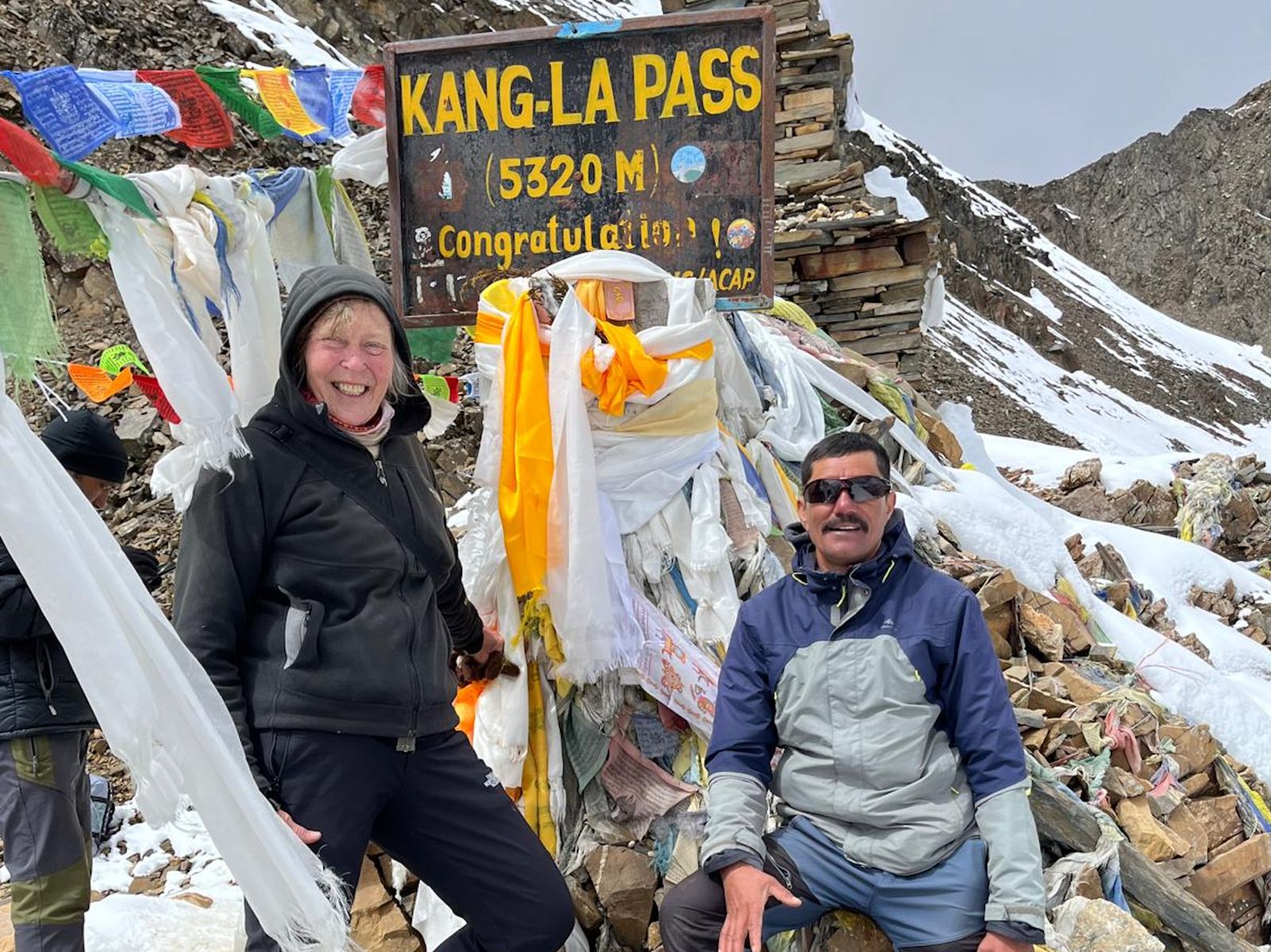
Save 28%
Nar Phu Valley Trek
Hidden in the fantasy landscapes of Nepal’s mythological Annapurna and Manaslu...
Upper Dolpo Jomsom Trek via Upper Dolpo Region
Highlight The Dolpo region was opened in 1989 with the Shey...






